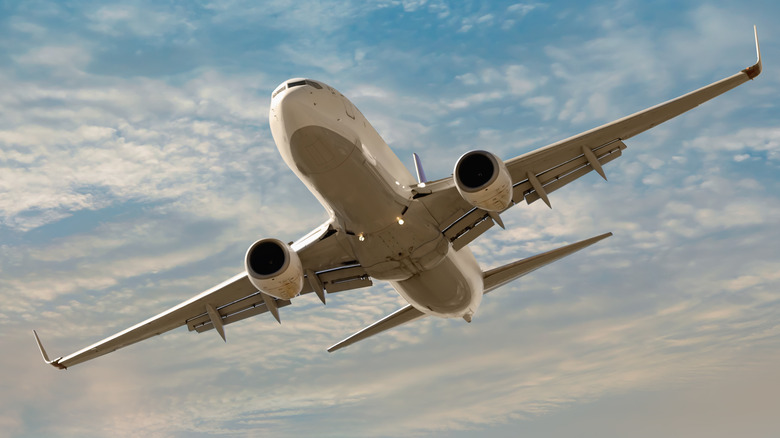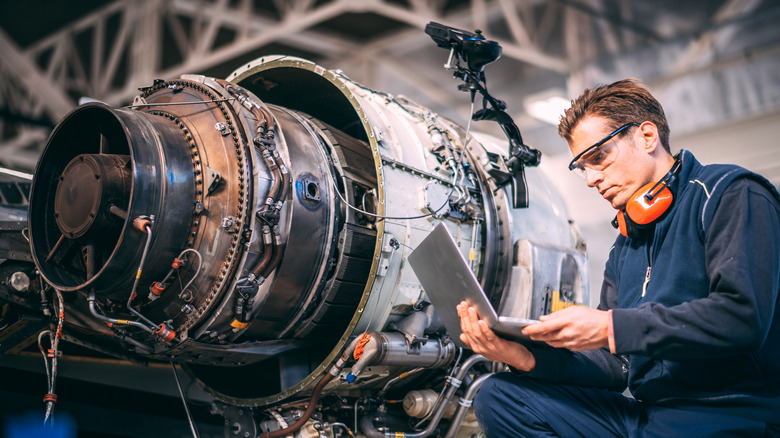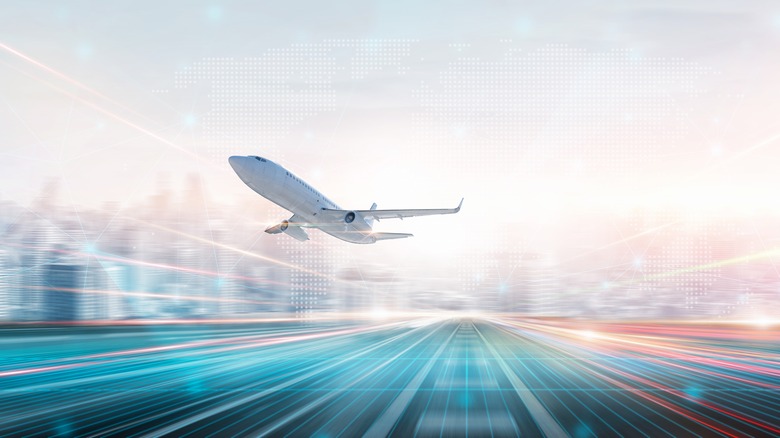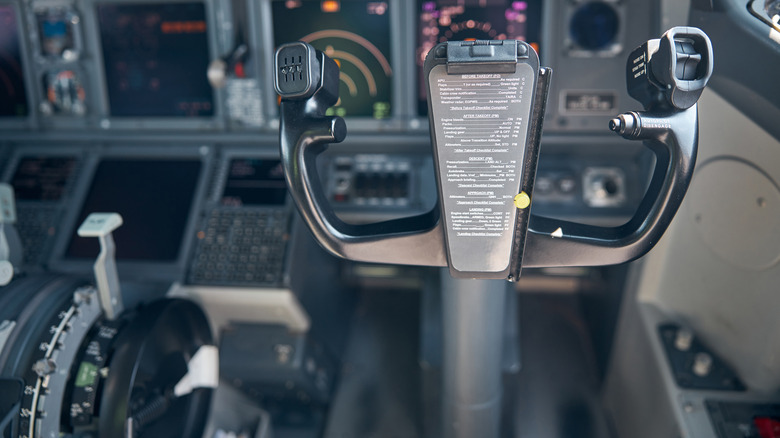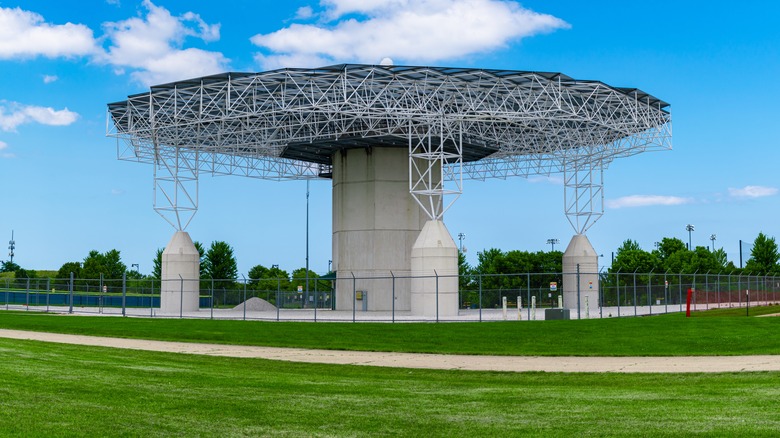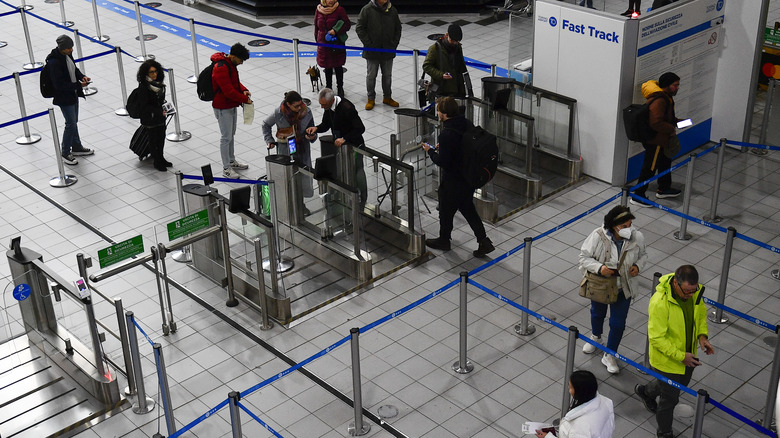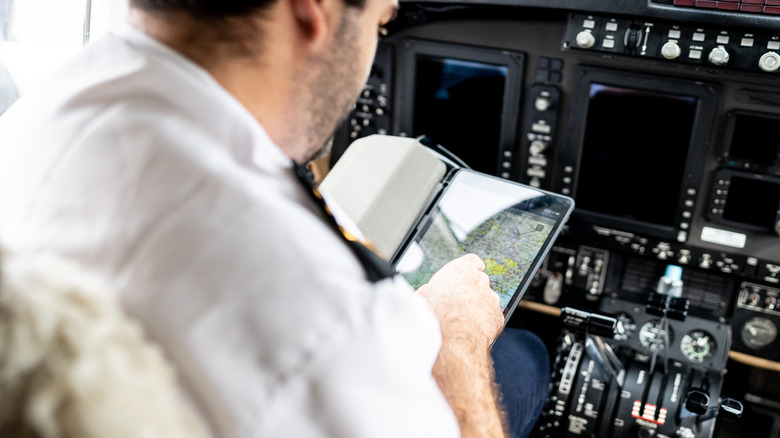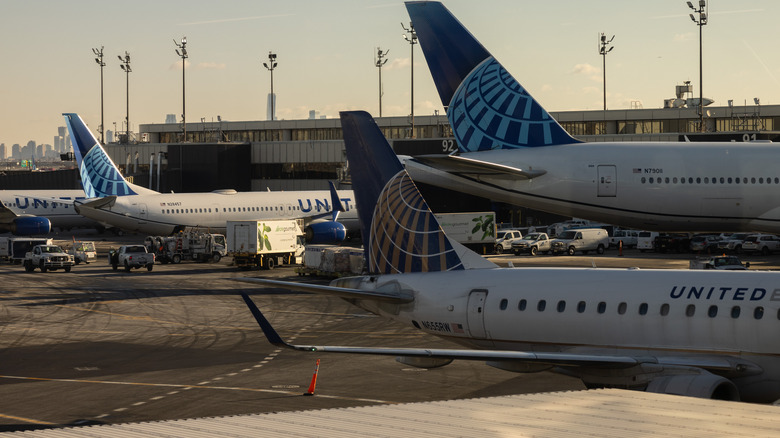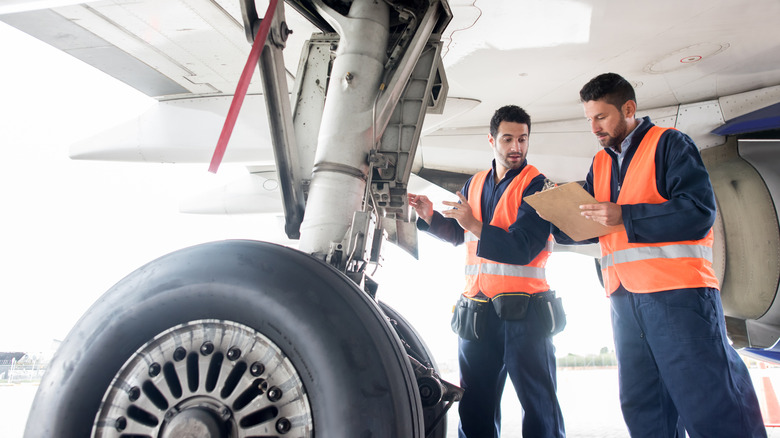A Pilot's Perspective On The Cutting-Edge Advances In Aircraft And AI's Impact On Air Travel
In many ways, AI is the future. As with many other sectors, AI looks poised to widen its presence in aviation, reshaping the way airplanes operate and enhancing the overall safety and efficiency of air travel. From advanced autopilot systems to intelligent navigation and maintenance protocols, the potential applications of AI technologies are limitless. However, it is important to question what this sort of advancement looks like from within.
As air travel strives for continuous innovation, AI could prove instrumental in optimizing flight routes, predicting maintenance needs, and mitigating potential risks. The marriage of cutting-edge machine learning algorithms with sophisticated avionic systems would open new frontiers in enhancing aircraft performance and responsiveness. However, with these advancements come challenges related to the need for skilled professionals capable of navigating this technological frontier.
To get a better perspective on such issues, SlashGear was able to get the perspective of Captain Richard Levy. Before retiring, Levy flew mostly widebody aircraft for his 40-year career at a major U.S. airline. At the mandatory commercial airline pilot retirement age of 65, he transferred to another major U.S. airline to teach in flight simulators and classrooms. Additionally, he is often hired by attorneys to serve as an Aviation Expert in litigation. As such, he had plenty of insight into how AI could impact future air travel.
Recent advances in aviation
To begin with, Levy notes that AI wouldn't exactly be the first major shakeup in the history of air travel. After all, airplanes have evolved heavily in just about every conceivable area. Over his four-decade career, Levy saw some of those changes come to pass.
"When I started with a major airline in the late 1970s we had 'round dials' (instruments and gauges) instead of 'glass cockpits,' where airspeed indicators, altimeters, altitude indicators (artificial horizons), and so on, are presented electronically, and yes, with safe backups in case of malfunctions," Levy explains.
Advances in aviation have propelled the industry into new realms of innovation, and the development of supersonic and hypersonic technologies is reshaping the concept of speed in air travel. Alongside these developments, automation has reached unprecedented sophistication, enabling smarter, more efficient flight operations. Breakthroughs in materials science have given rise to lighter, stronger, and more fuel-efficient aircraft designs, further pushing the boundaries of performance.
As aircraft performance improves, the tools that pilots use to operate safely have had to keep pace — and this reality could have an important impact on the influence of AI in aviation.
AI in the sky
AI has become a bit more of a buzzing topic lately, but that doesn't mean it isn't already something of a cornerstone in the aviation industry. AI has many uses within air travel for almost every facet of the process. However, the thing that probably springs to mind for most people when they think about AI airplanes is a completely autonomous aircraft.
"Whether or not autonomous artificial intelligence in the cockpit will occur is currently difficult to say," Levy said, "but technology in commercial aviation has certainly advanced over the past few decades, making aviation safer, more economical for the passenger as well as the air carrier, and contributing to smoother rides through the skies."
Many of the technologies that have allowed for progression in air travel use AI, though not in the way the topic is more popularly thought of. Vaughn College of Aeronautics and Technology explains that advanced AI algorithms allow for many efficient functionalities across an aircraft, such as managing inventory and fuel consumption. AI also allows for more predictive capabilities toward changing conditions and is essential in reducing pilot workload.
In addition, maintenance processes have been significantly streamlined through AI applications, which predict and identify potential issues before they escalate. AI-driven predictive analytics contribute to more informed decision-making regarding repairs and part replacements, minimizing downtime. Further, AI plays a crucial role in enhancing air traffic management, optimizing flight routes, and improving airspace utilization.
Current and recent automations
Automation in aircraft has undergone remarkable advancements. Modern aircraft are equipped with sophisticated autopilot systems, capable of managing various flight phases, from takeoff to landing.
"Low visibility landings, even 'autolandings,' are becoming more the norm. Computers with safety backups and warnings of failures, allowing pilots to manually fly a 'go around,' (otherwise known as a missed approach) if needed, are becoming more prevalent around the world," Levy said, "Airline pilots receive extensive training not only on how to conduct autolandings, but how to assess a system failure safely and correctly."
These autoland systems rely on advanced sensors and computer algorithms to maintain precise control, allowing pilots to focus on strategic decision-making and handling exceptional situations, and that's not the only place pilots rely on automation. For instance, technologies like the Flight Management System (FMS) and autothrottle facilitate optimal performance while managing safe operating parameters during commercial flights.
However, the increasing reliance on automation has sparked discussions about pilot proficiency, the human-machine interface, and the need for comprehensive training to ensure the safety of flights. As technology continually advances, striking the balance between machine and human presence will be essential.
Ground navigation aids
Ground navigation aids are instrumental components of the aviation infrastructure designed to assist aircraft during takeoff, landing, and en-route navigation. These aids comprise a diverse array of systems and technologies strategically placed on the ground to provide accurate and reliable guidance to pilots. Among the key ground navigation aids are the Instrument Landing System (ILS), Very High-Frequency Omnidirectional Range (VOR), and Non-Directional Beacon (NDB).
The ILS is a precision approach system widely used for landing in adverse weather conditions. Consisting of two main components, the localizer and the glideslope, ILS guides aircraft along the correct approach path, ensuring proper alignment with the runway. VOR is a radio navigation system that enables aircraft to determine their position and stay on course. VOR stations transmit signals in all directions, and pilots use onboard equipment to triangulate their position relative to the VOR station. NDB, on the other hand, is a low-frequency radio transmitter that emits signals in all directions.
Ground navigation aids collectively contribute to the creation of an intricate network that facilitates the safe and efficient movement of aircraft. Their reliability is paramount for ensuring the accuracy of navigation information, particularly during critical phases of flight. However, as technology advances, ground navigation aids may become less essential.
"20 years ago, we would navigate through United States airspace on published airways, otherwise known as 'highways in the skies,' but the transition to RNAV routings was underway. RNAV stood for Random Navigation in the past," Levy explained, "Today we say, 'Area Navigation.' Simply put, the desired flight path is defined by 'waypoints' made up of latitude and longitude coordinates and not necessarily by ground navigation aids."
AI's effects on the ground
AI has also impacted the ground side of aircraft travel, shaking up many aspects of airport operations, ground handling, and passenger experiences. One notable area is baggage handling, where AI-driven systems enhance efficiency and reduce the risk of errors. Automated baggage handling, powered by AI algorithms, ensures that luggage reaches its intended destination promptly, minimizing the chances of misrouting.
Airport security is another area impacted by AI, employing advanced analytics to enhance threat detection capabilities. Smart surveillance systems utilize facial recognition technology, behavioral analysis, and anomaly detection algorithms to identify potential security risks. This not only strengthens airport security measures but also streamlines the passenger screening processes.
On the ground, AI-driven traffic management systems optimize the movement of aircraft on runways and taxiways, reducing congestion and improving overall airport efficiency. Predictive analytics assist in planning aircraft movements, gate assignments, and ground services, minimizing delays and enhancing operational coordination.
Passenger experiences have also been elevated through AI applications on the ground. AI-powered chatbots and virtual assistants streamline communication, providing real-time information on flight status, gate changes, and baggage details. Facial recognition technology simplifies the boarding process, reducing queues and enhancing the overall efficiency of passenger boarding.
GPS accuracy
Recent advances in GPS technology have ushered in a new era of unparalleled accuracy in navigation. Traditional Global Positioning System accuracy typically hovered around several meters, but with the advent of advanced techniques and technologies, contemporary GPS systems achieve centimeter-level precision.
In aviation, ultra-precise GPS supports advanced navigation and landing systems, enhancing safety and efficiency. Centimeter-level accuracy is also vital in emerging technologies like automated processes in flight, where precise positioning is fundamental to safe and reliable operation. Overall, the ongoing advancements in GPS accuracy promise to reshape industries, improve location-based services, and unlock new possibilities across a spectrum of applications.
"For the most part, autolandings are dependent on ground navigation aids, but that is rapidly changing with the advancement of Global Positioning Systems (GPS). GPS is so accurate that more airplanes can fly safely in non-radar oceanic regions of the North Atlantic and North Pacific than in the past," Levy said, "For example, up until about 20 years ago, oceanic tracks over the North Atlantic connecting North America with Europe were spaced sixty nautical miles (NM) from each other. Now they can be spaced thirty NM of each other due to the accuracy of GPS."
The future
The future of aircraft travel looks bright. Electric propulsion systems and sustainable aviation fuels aim to usher in an era of greener flights while advances in aerodynamics and engine efficiency contribute to faster and more fuel-efficient aircraft. Autonomous and semi-autonomous flight technologies appear to be on the horizon, with AI-driven systems enhancing safety, navigation, and operational efficiency. However, Levy sees the future of air travel pointed more towards optimizing currently existing technologies, rather than going to fully autonomous flights.
"So, where will future advances in aircraft technology with developments in automation take us? For certain more economical routes, saving time for the customer and fuel expenses for the airline," Levy said, "There will be more efficient scheduling of the flight crews. Newer sources of energy will reduce the carbon footprint."
Passenger experiences are set to evolve with innovations like smart cabins, virtual reality entertainment, and biometric technologies streamlining processes from check-in to boarding. However, challenges such as regulatory frameworks, infrastructure development, and public acceptance will shape this future.
What is and isn't possible
While AI has already significantly transformed aviation, that doesn't mean there isn't more to look forward to. AI is proficient in automating routine tasks, enhancing flight control systems, and optimizing fuel efficiency through intelligent algorithms. It enables predictive maintenance, forecasting potential issues, and improving aircraft reliability.
However, there are limitations to what AI can achieve on planes. While AI excels in handling routine tasks, human intuition and decision-making remain crucial for complex and unforeseen situations. Pilots play a pivotal role in interpreting information, making strategic decisions, and managing exceptional circumstances. In emergency situations, the human element remains absolutely crucial.
"Will robots and AI be able to continue a safe flight during a flight interruption? Will they be able to safely divert a flight, should a medical emergency occur, or safely manage a rare engine failure during takeoff, especially when the climb capabilities of an airliner weighing 900,000 (about 450 tons) would be very critical?" Levy asked. "Time will tell."
The integration of AI on planes requires a careful balance between automation and human oversight. While AI enhances efficiency, it cannot replace the human factor entirely. Striking the right harmony between AI capabilities and human expertise is essential for ensuring the safety and reliability of aircraft operations in the dynamic and unpredictable realm of aviation.
Safer than ever
Aircraft travel is remarkably safe, owing to rigorous safety measures, advanced technology, and a comprehensive regulatory framework. The aviation industry prioritizes safety, implementing stringent standards in aircraft design, maintenance, and operational procedures. Modern aircraft undergo rigorous testing and certification processes to ensure they meet strict safety requirements.
Pilots receive extensive training, and aviation authorities mandate continuous education to stay abreast of the latest technologies and safety protocols. Advanced avionics, including collision avoidance systems, weather radar, and autopilot features, contribute to safer flights by providing real-time information and enhancing situational awareness.
Statistically, airplanes remain one of the safest ways to travel. Continuous improvements, lessons learned from incident investigations, and a commitment to innovation make aircraft travel increasingly secure. While challenges exist, the aviation industry's dedication to safety, coupled with technological advancements, continues to foster a high level of confidence in the safety of air travel.
"One thing we can say for sure today though is, according to research by Harvard University, flying in the U.S., Europe, and Australia is significantly safer than driving a car," Levy said, "In fact, the trend across many years of aviation is that modern flying is safer than ever. Thanks, in large part, to better technology."
